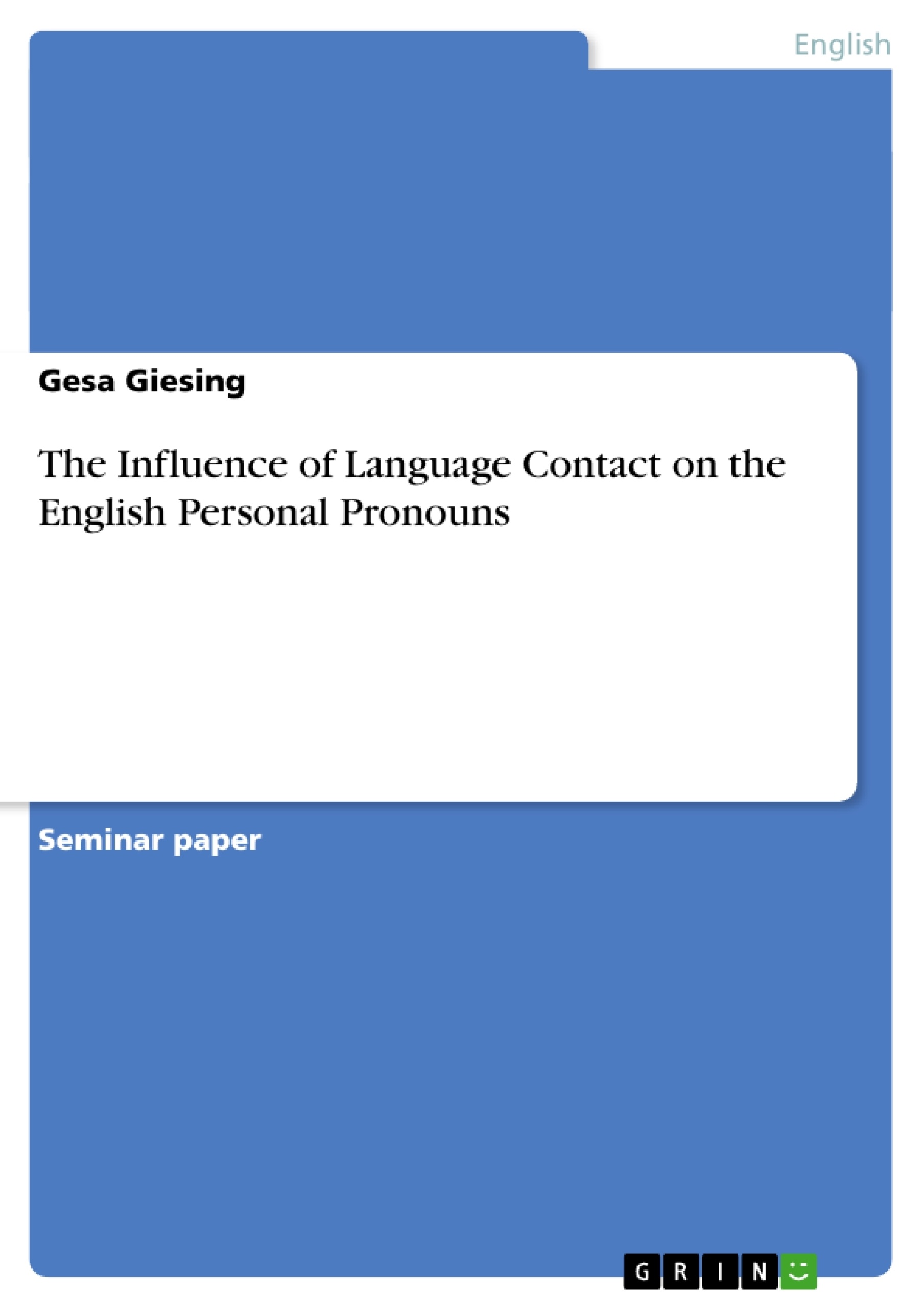When the banana was first introduced to the British Isles nobody knew what to call this new long, yellow object. The easiest way to make up for the want of a concise expression was to borrow the word from the languages spoken in the banana’s countries of origin, i.e. Spanish and Portuguese. In 1597 Hartwell remarked: ”Other fruits there are, termed Banana, which we verily think to be the Muses of Egypt and Soria.” (OED). Extra - linguistic circumstances had led to change, here addition, in a language’s lexical system.
But the process of change is not always as straightforward as here. First of all, obviously not only the lexicon is subject to change, but likewise are the phonological, the semantic and other systems of a language. Secondly, also intra-linguistic modifications, however triggered, can result in further adjustments within other areas of the language. Thirdly, addition is certainly not the only possible change. Replacement, loss and shift are some other phenomena that might succeed both extra- and intra-linguistic developments. One could add that, for instance in the case of addition, it is not always clear whether the need for a new word or the new word, having been used synonymously with some other expression in the beginning, occurred first. But the main confusion definitely arises from the interdependence of all movements within language and beyond. Linguistic change is usually far more complex than was the case with the banana. But, as Smith (1996: 43) has pointed out, there are three main factors with the help of which linguistic change can be understood and described, namely contact , variation and systemic regulation. So contact between different varieties or languages may add elements that are not necessary, i.e. two or more elements are used in variation until the system adjusts itself in order to improve its efficiency. I am not going to discuss in detail these three mechanisms underlying most processes of change and the various ways they might be interwoven. Rather, this paper will investigate how personal pronouns as an example were affected by them in the ME period, an instance where change was all but straightforward. The focus will be on language contact. An attempt will be made to give answers to the following questions:
* How do the developments of the second and the third person pronoun respectively differ from the ‘normal’ change of words from OE to PDE?
* Which role does the contact with France and Scandinavia play?
Inhaltsverzeichnis (Table of Contents)
- INTRODUCTION
- HOW THE BANANA DIFFERS FROM PERSONAL PRONOUNS
- THE USE OF STELLA
- LIMITS OF THE HELSINKI CORPUS
- MAIN BODY
- THE OLD ENGLISH PERSONAL PRONOUN PARADIGM
- THE SCANDINAVIAN INFLUENCE
- Some Historical Notes
- Some Linguistic Notes
- The Third Person Plural Pronouns
- A Remark on Parallel Developments
- THE FRENCH INFLUENCE
- Some Historical Notes
- Some Linguistic Notes
- The Second Person Pronouns
- Changes Induced by French Contact
- Other Changes
- CONCLUSION- SUMMARY, DEFICIENCIES, PROSPECT
- PRINTED WORKS CONSULTED AND CITED
Zielsetzung und Themenschwerpunkte (Objectives and Key Themes)
This essay examines the influence of language contact on the development of English personal pronouns during the Middle English period. The essay aims to answer questions about the specific changes in the second and third person pronouns, the impact of contact with French and Scandinavian languages, and the overall impact of these language contacts on the pronominal system.
- The evolution of English personal pronouns in the Middle English period.
- The specific impact of French contact on the English pronominal system.
- The influence of Scandinavian languages on English personal pronouns.
- The distinction between morphological and pragmatic changes resulting from language contact.
- The integration of language contacts into the Anglo-Saxon linguistic system.
Zusammenfassung der Kapitel (Chapter Summaries)
The introduction establishes the complexity of linguistic change, highlighting the influence of extra- and intra-linguistic factors. It focuses on language contact, specifically investigating the impact of French and Scandinavian influences on the English personal pronouns during the Middle English period.
The main body of the essay explores the Old English pronoun system and the subsequent changes brought about by contact with Scandinavian and French languages. It examines the historical and linguistic details of these contacts, with a particular focus on the changes observed in the third person plural pronouns due to Scandinavian influence and the second person pronouns due to French influence.
Schlüsselwörter (Keywords)
The primary keywords and focus topics include English personal pronouns, Middle English period, language contact, French influence, Scandinavian influence, morphological changes, pragmatic changes, linguistic history, diachronic linguistics, historical linguistics, and the Helsinki Corpus.
- Quote paper
- Gesa Giesing (Author), 1999, The Influence of Language Contact on the English Personal Pronouns, Munich, GRIN Verlag, https://www.grin.com/document/28616



